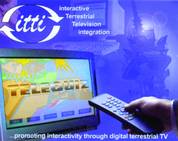

During the next few years the market for multimedia communication systems is expected to grow as fast as did the mobile phone market. After the year 2000 a new generation of multimedia products, based on MPEG-4 will fuse together today's communication and consumer electronic products. So says leading European semiconductor company, STMicro- electronics, who states that this is an area where its expertise is being put to good use.
Known as M4M, this is a MEDEA (Microelectronics Development for European Applications) project that aims to develop prototype chipsets for mobile communications applications based on the emerging MPEG-4 compression standard. This will provide greater interactivity and higher levels of compression than MPEG-1 and MPEG-2, says ST. The goal is to find technical solutions and prototype VLSI implementations for mobile realtime communications on the one hand, and interactive broadcast systems for mobile receivers on the other.
ST is currently the world's biggest supplier of MPEG-2 decoding chips and is working with 11 other organisations to develop optimised building blocks that can be rapidly adapted for specific applications as they emerge.
Bridges and broadcasting
Interactivity is one of today's key trends and considerable effort is being applied all over the world to bringing interactivity to the television industry. Today there is a large gap between standard television broadcasting and fully interactive services such as the Internet. According to ST, MEDEA Project A101 aims to bridge this gap by developing a digital multimedia receiver that will receive a wide range of inputs (satellite, cable and terrestrial broadcasts, telephone etc) and provide return channels to allow user interaction with the selected service.
This not only leads to the availability of services such as home shopping and video-on-demand, it opens up many new possibilities. Relaxing at home, the consumer can participate in the quiz that is being broadcast, or stake money on a horse race at the very moment that the race is being run hundreds of miles away, are some examples.
Interactive digital terrestrial TV
At the IBC '99 exhibition held in Amsterdam, the partners in another European project, iTTi (interactive Terrestrial TV integration), provided the first demonstration of interactive digital terrestrial TV, using a real transmission environment on both the broadcaster and the user side. ST acted as project leader in this.

© Technews Publishing (Pty) Ltd | All Rights Reserved